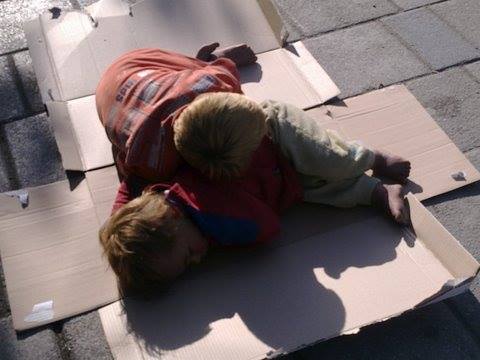National Study on children in street situation in Albania
The Study on Children in Street Situation in Albania is conducted in the framework of Social Services Reform by the Ministry of Social Welfare and Youth in collaboration with UNICEF and Save the Children. ARSIS, GFK and an international expert have been appointed to carry out the Study from May 2013 to February 2014.

This is the first national qualitative and quantitative assessment of children in street situation carried out in Albania, providing a baseline for this phenomenon. The main aim of the study is to give key stakeholders a thorough and extensive understanding of all issues and numbers surrounding this target group, for the definition and review of the policy agenda and to plan current and future interventions. This study is for the benefit of relevant government bodies/agencies, as well as civil society organisations to support the development of new strategies regarding children in street situation and to improve service provision for these children and other support mechanisms needed in prevention and protection for them and their families.
From the numerical survey, based upon an observational count of children from 0 to 18 years old with some connection to the street, either living and/or working there on a seasonal or transitory basis, a total of 2014 children were identified in August 2013 (Wave 1, covering 8 districts of Albania) and a total of 2527 children were identified in October 2013 (Wave 2, covering all 12 districts of Albania).
Fast Facts
Demographics
The majority of street children in Albania are no older than 14 years of age, though there is a sizeable population of street adolescents who are 15-17 (28% - 564 children 1; 31% - 783 children).
For most of them, street experience begins around early childhood. Initial interview, counting and focus group results indicate that significant numbers of infants from 0-5 years old 11.66%, 235 children - 2 13.9%, 381 children) are in the streets accompanied by their mothers while begging.
Gender
Among Albanian street children, there are more than twice as many boys than girls (70.1% - 1476 boys and 29.9% - 538 girls out of 2014 children in wave 1; 74% - 1882 boys and 26% - 645 girls out of 2527 children in wave 2) and the disparity grows even larger amongst teenagers (10 to 18 years).
In Tirana, girls were a higher percentage of the total (35.5% in Wave 1) compared to the proportion of girls in other cities (~23%); however boys are more prevalent in street situations throughout the country.
· Majority of children in street situation are boys aged 10-17 years old:
(70.1% or 1476 boys, and 29.9% or 538 girls)
(74% - 1882 boys and 26% - 645 girls)
· Almost a third of children in street situation are 15-17 year old adolescents (on average 29.5% or 745 children)
Children from 4-14 years of age were 66.5% (1680 on average), and there were a significant number of infant children from 0-3 years old (102 children or 4% on average).
- Children accompanying their mothers while begging:
11.66% or 235 children; 2: 13.9% or 381 children, number of younger children (0-5 year olds)
· A quarter of the children identified belonging to the Albanian majority while 74.3% (581 out of 782 children) belong to the Roma and Egyptian communities. (There is a twofold significance to this data: firstly, the number of Albanian majority children in street situation is higher than expected, and secondly, since the other ethnic minorities or language groups account for no more than 1% of the total Albanian population, the study confirms that the incidence of children in street situation from these ethnic minority groups is disproportionately high)
- Children are involved in different street-related activities. The most common of these are selling different items (38% - 25%) such as cigarettes, lighters, water, farm produce and other foods, flowers, pens, pencils, car fresheners or other accessories, as well as begging for money (35% - 21%), recycling plastic and metal (8% – 20%), and (12% - 15%). Informal jobs include loading and unloading goods trucks, working in agriculture, cleaning roads, cleaning at cemeteries, looking after sun beds on beaches, working at entrances to mines, and busking.
· The trend in informal work is towards a greater diversity of activities and these jobs extend beyond the urban settings more than previously believed.
· Albanian majority children are more involved in selling items over the summer and informal work during the winter. The majority of children identified begging are from the Roma and Egyptian communities.
· The study also revealed a new phenomenon related to the cultivation of marijuana in Lazarat (Gjirokaster) involving 312 children.
It is expected that results from of this study will play a significant role in the National Reform of Social Services, undertaken by the Ministry of Social Welfare and Youth, and will be used for the finalization of Albanian National Action Plan and Guideline Working Procedures for children in street situation.
Here is the full report: http://albania.savethechildren.net/sites/albania.savethechildren.net/fil...
 Albania
Albania